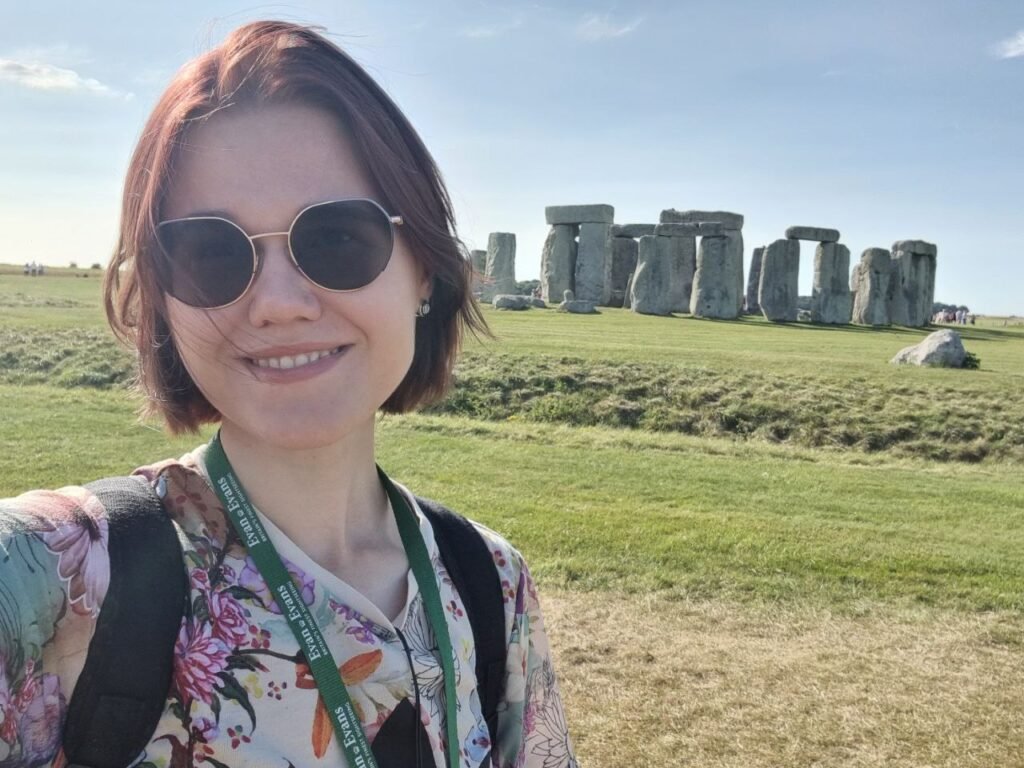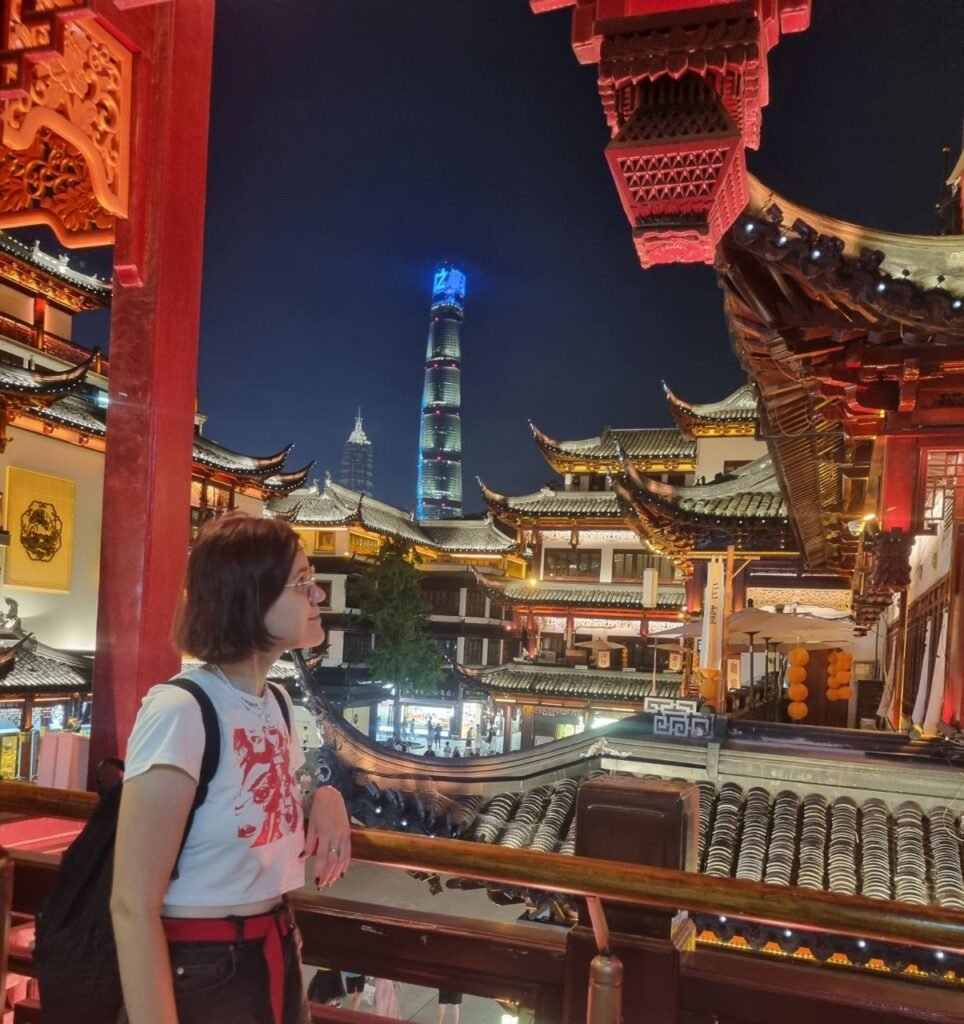Within the span of three weeks, I’ve moved between extreme poles of human achievement—from the neolithic engineering of Stonehenge to the futuristic skyline of Shanghai. This jarring juxtaposition, far from being disorienting, has provided unexpected clarity and inspiration as I put the finishing touches on “Anonymous Letters” and begin conceptualizing new projects.
The English portion of my journey took me through the historical spine of England—Stonehenge, Bath, Windsor—sites where the accumulated weight of centuries feels almost tangible. At Stonehenge, I arrived shortly after dawn, when the summer crowds had yet to materialize. Standing within the circuit of sarsen stones as morning light gradually illuminated their weathered surfaces, I found myself contemplating the persistence of mystery. Despite centuries of research, fundamental questions about the monument remain unanswered: How exactly were these massive stones transported and erected? What precise purpose did the site serve? Why this particular configuration?
This embrace of the unknowable resonates deeply with themes I’ve been exploring in “Anonymous Letters.” There’s something both frustrating and liberating about accepting that some questions will never receive definitive answers—that ambiguity itself can be a kind of truth. The novel’s protagonist, Anna, must ultimately decide whether solving the mystery of Dorimore would enhance or diminish her experience of the world.

From Stonehenge, I traveled to Bath, where Roman engineering meets Georgian architecture in a layered testament to different eras’ aesthetic and technological priorities. The Roman baths themselves—with their ingenious heating systems and hydraulic innovations—demonstrate how advanced technology can appear simultaneously alien and familiar across the millennia. In the Pump Room above, Georgian society created spaces for elaborate social rituals, equally technical in their own way. Both civilizations encoded their values in architecture, creating environments that shaped human behavior according to specific ideals.
This historical layering continued at Windsor Castle, where a medieval fortress has gradually evolved into a working palace. Walking through rooms that have witnessed nearly a thousand years of history, I was struck by how each generation has adapted these spaces to their needs while preserving elements of the past. The castle exists simultaneously in multiple historical moments—a physical manifestation of the palimpsest that is British cultural identity.
A thirteen-hour flight then transported me from this accumulation of history to Shanghai’s vision of accelerated future. Landing at night, the city presented itself as a light installation of nearly hallucinatory intensity—towers like crystallized mathematics, bridges tracing elegant parabolas across the Huangpu River, the Oriental Pearl Tower glowing like some extraterrestrial artifact against the dark sky.

During my week there, I found myself constantly navigating between extremes—from the colonial-era buildings of the Bund to the hypermodern skyscrapers of Pudong, from traditional lane houses to shopping complexes of bewildering scale. The city embodies a compression of historical time, where centuries of development occur within decades. Walking through Xintiandi, where traditional shikumen houses have been repurposed as luxury boutiques and restaurants, I witnessed how rapidly contemporary China metabolizes its own past, transforming it into something both familiar and unrecognizable.
These contrasting environments have had an unexpected influence on my current writing projects. While “Anonymous Letters” draws primarily on the mysterious atmospheres and layered histories of rural England, I find elements of Shanghai’s disorienting juxtapositions working their way into the novel’s climactic scenes. Here’s a brief excerpt where Anna finds herself in Dorimore during a heavy fog:
…
“Dorimor, a modest settlement dating back to at least the 16th century, has at times been associated with eerie happenings: travelers lost in the surrounding marshes, stories of phantom lights in the forest, and local superstitions about malevolent spirits in the bog water. While most accounts are anecdotal, the area’s isolation and frequent fog have contributed to its folklore. In recent decades, the village has seen a declining population. Visitors note a pervasive sense of melancholy and disquiet.”
Anna closed the book, a faint tremor of excitement tugging at her. Phantom lights, lost travelers. She recalled the letter’s words about “things that defy explanation.” The possibility of something genuinely supernatural both unsettled and thrilled her. She thought of authors like Shirley Jackson, of how the line between the psychological and the paranormal could blur seamlessly.
Still, she reminded herself to remain rational. Countless rural places have legends. Many revolve around people simply getting lost or falling victim to natural hazards, then local imagination magnifies them into ghost stories. Yet a part of her whispered: Isn’t that exactly how your best stories start?
Outside the library, the sky had darkened, a brisk wind tossing leaves along the pavement. She caught a bus home, gazing at the passing storefronts, lost in the swirl of possibility. By the time she arrived at her apartment, she noticed with a jolt that her mailbox was not empty…
Beyond “Anonymous Letters,” my travels have sparked ideas for future projects. The contrast between Stonehenge and Shanghai has me thinking about a novel set in a world where different technological paradigms exist simultaneously—where neolithic, medieval, industrial, and post-industrial societies occupy the same physical space but perceive reality through fundamentally different frameworks. This concept resonates with the reality-fracturing themes of my “Tarveran” universe, but approaches them from a new angle.
As I pack for my return to England, I’m struck by how these journeys between extremes have clarified certain persistent questions in my work: How do we construct meaning in fragmenting realities? How do we reconcile contradictory truths? Where do we find stable ground when the landscape—whether physical, social, or technological—shifts beneath our feet? These questions have no final answers, but in their continued exploration lies the heart of what I’m attempting as a writer.
“The past is a foreign country: they do things differently there.” (L.P. Hartley’s famous opening line takes on new resonance when contemplating both ancient monuments and hypermodern cityscapes)